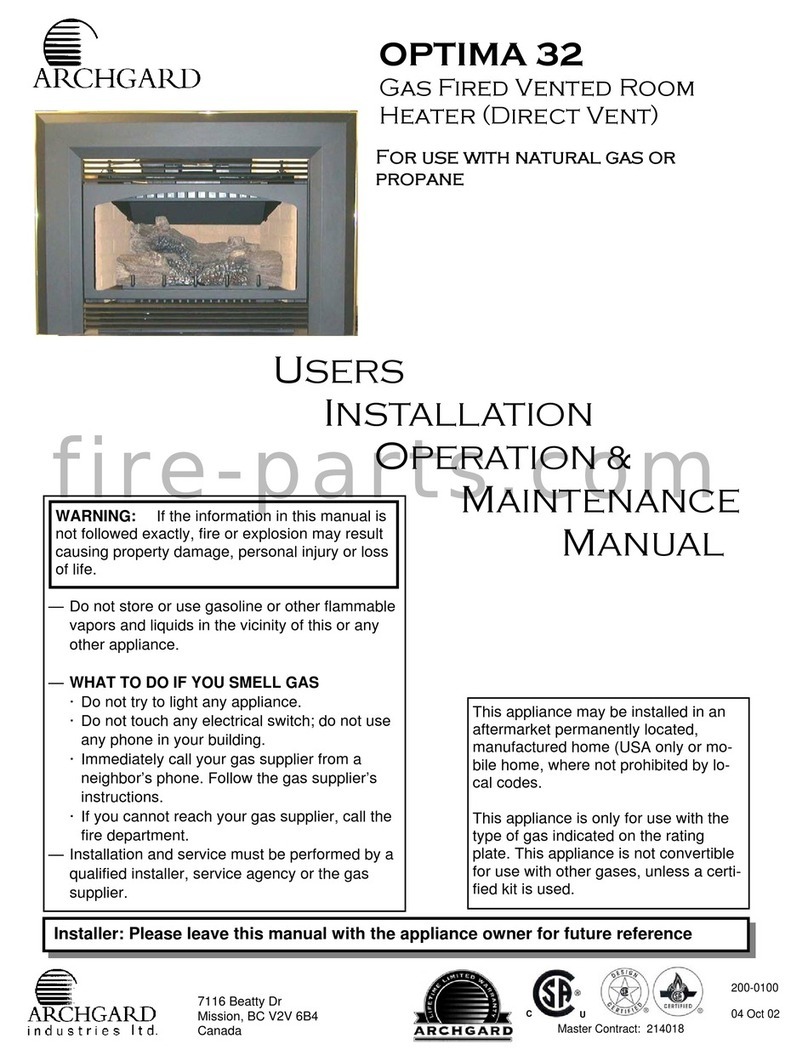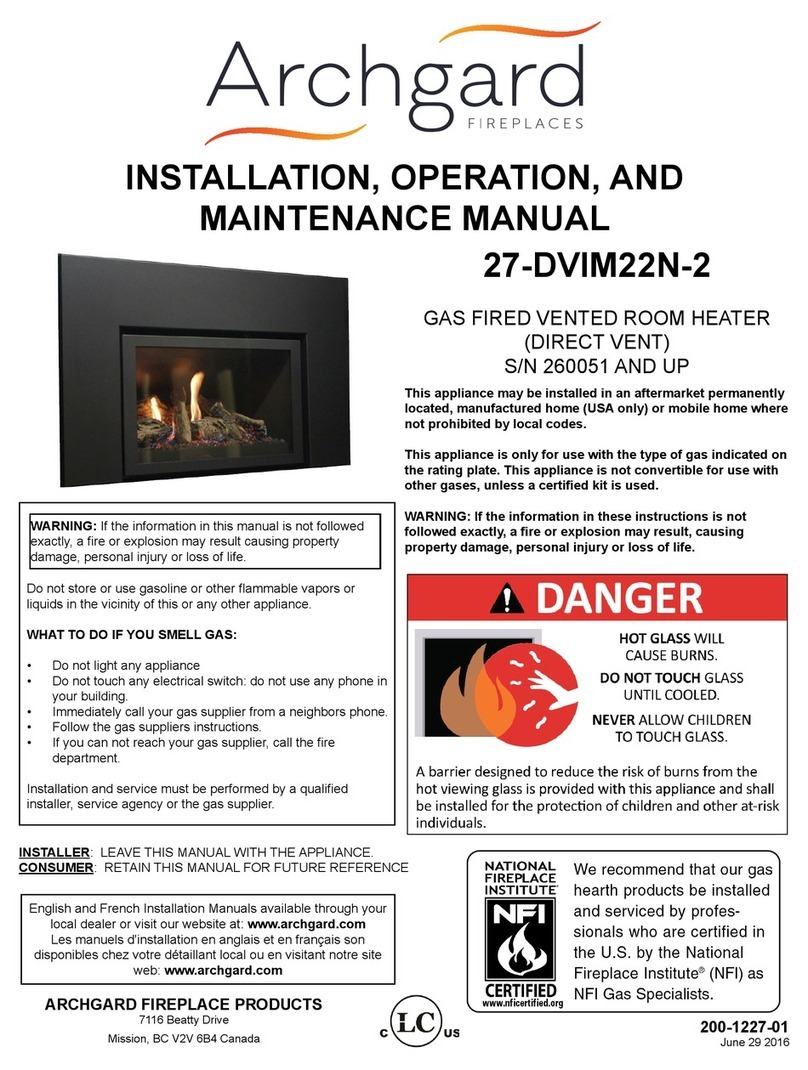
Euro 35 8
INSTALLATION INSTRUCTIONS
PRECAUTIONS
Take time to ensure the existing fireplace is clean and level before beginning installation. The chimney
should be in good condition (See note page 10).
This appliance must be installed by a qualified gas installer and the installation conform to the
installation codes.
This appliance needs fresh air for safe operation and must be installed so there are provisions for
adequate combustion and ventilation air. Provide adequate clearance around air openings of the
appliance. Never obstruct front openings. Provide adequate clearances for proper operation and
servicing of the appliance. This appliance must be properly connected to a venting system and must not
be connected to a chimney flue serving a separate solid fuel burning appliance.
GAS CONNECTIONS
Have your gas supplier or a qualified gas fitter run a gas supply line into the fireplace. The line
must be properly sized and fitted according to the installation codes. Immediately up stream of the
supply connection, the fitter shall provide an accessible manual shut-off valve and a 1/8 NPT
plugged tapping accessible for connection to a test gauge.
CAUTION: The appliance and its individual shutoff valve must be disconnected from the gas
supply piping system during any pressure testing of that system at test pressures in execss of 1/2
psig (3.5 kPa). The appliance must be isolated from the gas supply piping system by closing its
individual manual shutoff valve during any pressure testing of the gas supply piping system at test
pressures equal to or less than 1/2 psig (3.5 kPa). Failure to do so will damage the appliance’s
gas valve. Such damage is not covered by the manufacturer’s warranty.
Natural Gas Pressure Settings:
The inlet supply or line pressure must be a minimum of 4.5” wc (1.1 kPa) and a maximum of 8” wc
(2 kPa). The orifice has a #34 DMS drill size.
ELEVATION INPUT RATING
0-4500 ft. (0-1400 m) 35,000 BTU/hr (10,200 watts)
4500 ft. (1400 m) + 35,000 BTU/hr (10,200 watts) less 4% per 1000 ft. (300 m)
Please contact your local Archgard dealer or distributor for the appropriate orifice size
(i.e. At 6500 ft we recommend a #36 DMS drill size).
Propane Pressure Settings:
The inlet supply or line pressure must be a minimum of 11” wc (2.8 kPa) and a maximum of 14” wc
(3.5 kPa). The orifice has a #50 DMS drill size.
ELEVATION INPUT RATING
0-4500 ft. (0-1400 m) 34,000 BTU/hr (10,000 watts)
4500 ft. (1400 m) + 34,000 BTU/hr (10,000 watts) less 4% per 1000 ft. (300m)
Please contact your local Archgard dealer or distributor for the appropriate orifice size
(i.e. At 6500 ft we recommend a #51 DMS drill size).
NOTE: THE INPUT RATING SHOULD ALWAYS BE CHECKED WHEN FIRST RUNNING THIS
APPLIANCE. To do this, reduce the background flow rate, time the meter, light the fireplace and
take another reading after 15 minutes of operation. Check with your gas supplier for the gas BTU
content at your elevation. Input is the rate of flow multiplied by the heating value of the gas (cubic
feet/hour x BTU per cubic feet). Adjust the manifold pressure so that the unit does not operate
above the rated input. If the rate is out by +/-5% of the specified rate, it is within allowable
tolerances. If it is out more, check the manifold pressure against specifications on page 4. If
correct, check burner orifice size.
fire-parts.com































